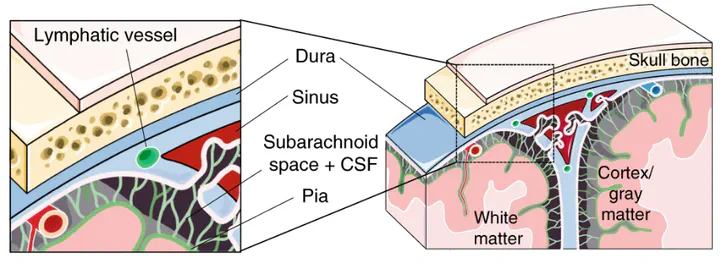Single-cell profiling of CNS border compartment leukocytes reveals that B cells and their progenitors reside in non-diseased meninges.
Jul 1, 2021·,,,,,,,,,,,,,,,,,,·
0 min read
David Schafflick
Jolien Wolbert
Michael Heming
Christian Thomas
Maike Hartlehnert
Anna-Lena Börsch
Alessio Ricci
Sandra Martín-Salamanca
Xiaolin Li
I-Na Lu
Mathias Pawlak
Jens Minnerup
Jan-Kolja Strecker
Thomas Seidenbecher
Sven G Meuth
Andres Hidalgo
Arthur Liesz
Heinz Wiendl
Gerd Meyer Zu Horste

Abstract
The CNS is ensheathed by the meninges and cerebrospinal fluid, and recent findings suggest that these CNS-associated border tissues have complex immunological functions. Unlike myeloid lineage cells, lymphocytes in border compartments have yet to be thoroughly characterized. Based on single-cell transcriptomics, we here identified a highly location-specific composition and expression profile of tissue-resident leukocytes in CNS parenchyma, pia-enriched subdural meninges, dura mater, choroid plexus and cerebrospinal fluid. The dura layer of the meninges contained a large population of B cells under homeostatic conditions in mice and rats. Murine dura B cells exhibited slow turnover and long-term tissue residency, and they matured in experimental neuroinflammation. The dura also contained B lineage progenitors at the pro-B cell stage typically not found outside of bone marrow, without direct influx from the periphery or the skull bone marrow. This identified the dura as an unexpected site of B cell residence and potentially of development in both homeostasis and neuroinflammation.
Type
Publication
Nature Neuroscience